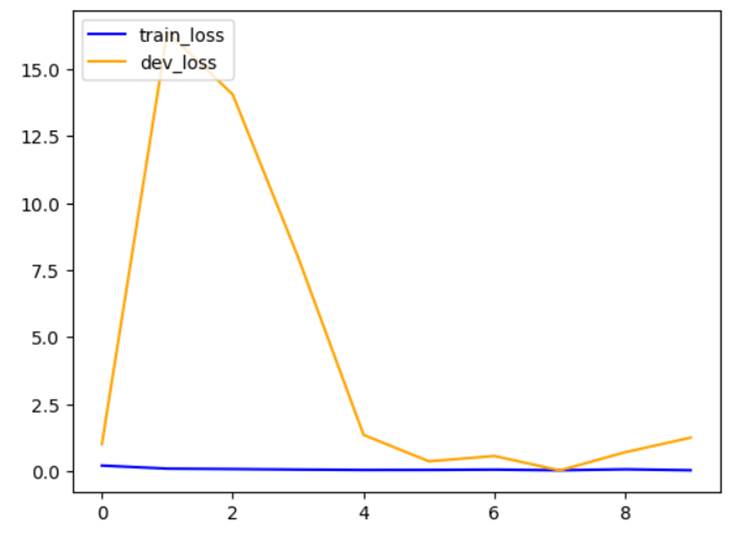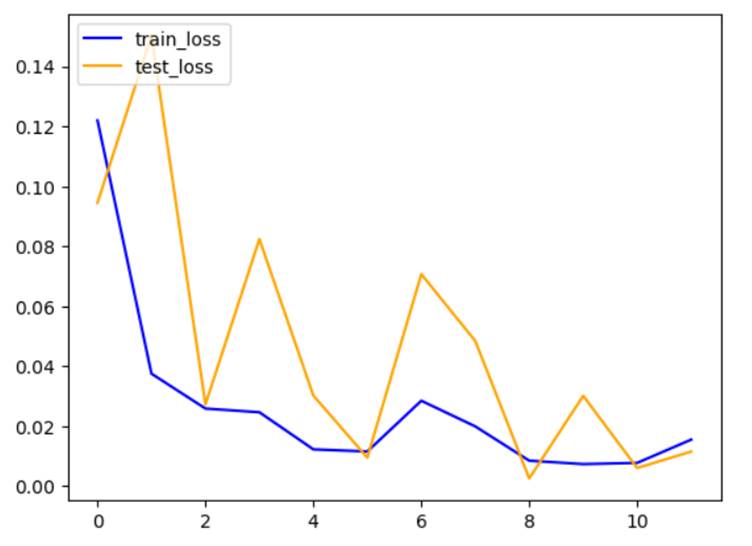MANGO
LEAF DISEASE PREDICTION
In this assignment, we
are given a dataset of images of mango leaves containing various diseases.
There are 8 different diseases. Our goal is to classify an image into one of
these diseases.
Convolutional
neural network (CNN): CNN is an artificial
neural network (ANN) which is mostly used in image classification. There are
some disadvantages of using ANN for image classification. They are it involves
too much computation, treats local pixels same as pixels far apart and
sensitive to location of an object in an image. To overcome these problems, we
use CNN. CNN uses filters to detect features in images. Filters are rotated
throughout the whole image to detect features. After applying the filters over
the image, we get feature maps. This whole process is convolution layer. We
will use Relu activation function to the obtained
feature maps. Relu helps with making model
non-linear. Next pooling layer is applied to reduce the size to reduce
computations. There could be any number of convolution and pooling layers.
After that we will connect these to fully connected dense layer. CNN does not
take care of rotation and scale. We have to use data augmentation techniques to
generate new rotated, scaled images from existing dataset. As hyperparameters
we have to specify how many filters to be used and size of each filter.
Data Set Description: There are 8 directories. They are 'Anthracnose', 'Bacterial Canker', 'Cutting Weevil', 'Die Back', 'Gall Midge', 'Healthy', 'Powdery Mildew', 'Sooty Mould'. Each directory represents each disease.
Inside each directory there are several leaf images. There are 4000 images in total. Code: 1. In the first step I stored all the images present in the various directories in a data frame consisting of two columns img_path and class_names. In the first column there is path of the image and in the second column
there will be corresponding disease name.
data_dir = 'D:/Data/LeafData'
df = {"img_path":[],"class_names":[]}
for class_names
in os.listdir(data_dir):
for img_path in glob.glob(f"{data_dir}/{class_names}/*":
df["img_path"].append(img_path)
df["class_names"].append(class_names)
df = pd.DataFrame(df)
2. The next step is to divide the data set into train, test, and
development. I decided to split into 60% train, 20% test and 20% development.
from sklearn.model_selection
import train_test_split
train_size=0.6
train,rem = train_test_split(df, train_size=0.6)
test_size = 0.5
dev,test = train_test_split(rem,
test_size=0.5)
print(train.count())
print(dev.count())
print(test.count())
3. Next, I visualized one image
from
PIL import Image
import
numpy as np
from
IPython.display import display
#
define the shape of the image
height
= 100
width
= 100
channels
= 3
pixel_values
= cv2.imread(df.img_path[0])
image
= Image.fromarray(pixel_values.astype('uint8'))
display(image)
Output:

4. Now, I used Label encoding
to the class names.
from sklearn.preprocessing
import LabelEncoder
Le = LabelEncoder()
train["class_names"]
= Le.fit_transform(train["class_names"])
test["class_names"]
= Le.fit_transform(test["class_names"])
dev["class_names"]
= Le.fit_transform(dev["class_names"])
5. Next, I used One hot
encoding to the class names.
train_labels=tf.keras.utils.to_categorical(train["class_names"])
dev_labels = tf.keras.utils.to_categorical(dev["class_names"])
test_labels = tf.keras.utils.to_categorical(test["class_names"])
6. In the next step, I performed
image transformation and data augmentation.
def load(image , label):
image = tf.io.read_file(image)
image = tf.io.decode_jpeg(image
, channels = 3)
return image , label
IMG_SIZE = 96
BATCH_SIZE = 64
resize = tf.keras.Sequential([
tf.keras.layers.experimental.preprocessing.Resizing(IMG_SIZE,
IMG_SIZE)
])
data_augmentation = tf.keras.Sequential([
tf.keras.layers.experimental.preprocessing.RandomFlip("horizontal"),
tf.keras.layers.experimental.preprocessing.RandomRotation(0.1),
tf.keras.layers.experimental.preprocessing.RandomZoom(height_factor =
(-0.1, -0.05))
])
7. Now I have written a
function to create a TensorFlow data object .
AUTOTUNE = tf.data.experimental.AUTOTUNE
#to find a good allocation of its CPU budget across all parameters
def get_dataset(paths
, labels , train = True):
image_paths = tf.convert_to_tensor(paths)
labels = tf.convert_to_tensor(labels)
image_dataset = tf.data.Dataset.from_tensor_slices(image_paths)
label_dataset = tf.data.Dataset.from_tensor_slices(labels)
dataset = tf.data.Dataset.zip((image_dataset , label_dataset))
dataset = dataset.map(lambda
image , label : load(image , label))
dataset = dataset.map(lambda
image, label: (resize(image), label) , num_parallel_calls=AUTOTUNE)
dataset = dataset.shuffle(1000)
dataset = dataset.batch(BATCH_SIZE)
if train:
dataset = dataset.map(lambda
image, label: (data_augmentation(image), label) , num_parallel_calls=AUTOTUNE)
dataset = dataset.repeat()
return dataset
8. Now, I created train
dataset, test dataset and val dataset using the above
function.
%time
train_dataset = get_dataset(train["img_path"], train_labels)
image , label = next(iter(train_dataset))
%time
val_dataset = get_dataset(dev["img_path"] , dev_labels ,
train = False)
image , label = next(iter(val_dataset))
%time
test_dataset = get_dataset(test["img_path"] , test_labels
,train = False)
image , label = next(iter(val_dataset))
9. Now, I built CNN model using
128 filters, kernel size 3 and average pooling with 12epochs. I used dev data to calculate
accuracy.
from tensorflow.keras.applications
import EfficientNetB2
backbone = EfficientNetB2(
input_shape=(96,
96, 3),
include_top=False
)
model1 = tf.keras.Sequential([
backbone,
tf.keras.layers.Conv2D(128, 3,
padding='same', activation='relu'),
tf.keras.layers.GlobalAveragePooling2D(),
tf.keras.layers.Dense(128,
activation='relu'),
tf.keras.layers.Dropout(0.3),
tf.keras.layers.Dense(8,
activation='sigmoid')
])
model1.summary()
model1.compile(
optimizer=tf.keras.optimizers.Adam(learning_rate=0.001, beta_1=0.9, beta_2=0.999,
epsilon=1e-07),
loss = 'binary_crossentropy',
metrics=['accuracy' ,
tf.keras.metrics.Precision(name='precision'),tf.keras.metrics.Recall(name='recall')]
)
history1 = model1.fit(
train_dataset,
steps_per_epoch=len(train_labels)//BATCH_SIZE,
epochs=12,
validation_data=val_dataset,
validation_steps
= len(dev_labels)//BATCH_SIZE,
class_weight=class_weight
)
The train accuracy after the last epoch is 0.9760 and dev accuracy is 0.9245.
10. Now, I plotted a graph of train
loss vs dev loss.
import matplotlib.pyplot
as plt
plt.plot(history1.history['loss'],color='blue',label='train_loss')
plt.plot(history1.history['val_loss'],color='orange',label='dev_loss')
plt.legend(loc='upper left')
plt.show()

11. Now, I built another model by changing filters
to 256 using 12 epochs.
from tensorflow.keras.applications
import EfficientNetB2
backbone = EfficientNetB2(
input_shape=(96,
96, 3),
include_top=False
)
model2 = tf.keras.Sequential([
backbone,
tf.keras.layers.Conv2D(256, 3, padding='same',
activation='relu'),
tf.keras.layers.GlobalAveragePooling2D(),
tf.keras.layers.Dense(256,
activation='relu'),
tf.keras.layers.Dropout(0.3),
tf.keras.layers.Dense(8,
activation='sigmoid')
])
model2.summary()
model2.compile(
optimizer=tf.keras.optimizers.Adam(learning_rate=0.001, beta_1=0.9, beta_2=0.999,
epsilon=1e-07),
loss = 'binary_crossentropy',
metrics=['accuracy' ,
tf.keras.metrics.Precision(name='precision'),tf.keras.metrics.Recall(name='recall')]
)
history2 = model2.fit(
train_dataset,
steps_per_epoch=len(train_labels)//BATCH_SIZE,
epochs=12,
validation_data=val_dataset,
validation_steps
= len(dev_labels)//BATCH_SIZE,
class_weight=class_weight
)
The train accuracy after the last epoch is 0.9910 and dev accuracy is 0.9870.
12. Now, I plotted a graph of train loss vs dev
loss.
import matplotlib.pyplot
as plt
plt.plot(history2.history['loss'],color='blue',label='train_loss')
plt.plot(history2.history['val_loss'],color='orange',label='dev_loss')
plt.legend(loc='upper left')
plt.show()

13. Now, I built another model using
256 filters and kernel size 4 using 12 epochs. Also, I used MaxPooling
here.
from
tensorflow.keras.applications import EfficientNetB2
backbone
= EfficientNetB2(
input_shape=(96,
96, 3),
include_top=False
)
model3
= tf.keras.Sequential([
backbone,
tf.keras.layers.Conv2D(256, 4,
padding='same', activation='relu'),
tf.keras.layers.MaxPooling2D((3,3)),
tf.keras.layers.Flatten(),
tf.keras.layers.Dense(256,
activation='relu'),
tf.keras.layers.Dropout(0.3),
tf.keras.layers.Dense(8,
activation='sigmoid')
])
model3.summary()
model3.compile(
optimizer=tf.keras.optimizers.Adam(learning_rate=0.001, beta_1=0.9, beta_2=0.999,
epsilon=1e-07),
loss = 'binary_crossentropy',
metrics=['accuracy' ,
tf.keras.metrics.Precision(name='precision'),tf.keras.metrics.Recall(name='recall')])
history3
= model3.fit(
train_dataset,
steps_per_epoch=len(train_labels)//BATCH_SIZE,
epochs=12,
validation_data=val_dataset,
validation_steps
= len(dev_labels)//BATCH_SIZE,
class_weight=class_weight
The train accuracy after the last epoch is 0.9923 and dev accuracy is 0.9727.
14. Now, I plotted a graph of train loss vs dev
loss.
import matplotlib.pyplot
as plt
plt.plot(history3.history['loss'],color='blue',label='train_loss')
plt.plot(history3.history['val_loss'],color='orange',label='dev_loss')
plt.legend(loc='upper left')
plt.show()

15. Now, I built another model using
256 filters and kernel size 4 using 10 epochs. Also, I used MaxPooling
here. Also changed learning rate from 0.001to 0.003 in optimizer.
from tensorflow.keras.applications
import EfficientNetB2
backbone = EfficientNetB2(
input_shape=(96,
96, 3),
include_top=False
)
model4 = tf.keras.Sequential([
backbone,
tf.keras.layers.Conv2D(256, 4,
padding='same', activation='relu'),
tf.keras.layers.MaxPooling2D((3,3),
padding='same'),
tf.keras.layers.Conv2D(256, 4,
padding='same', activation='relu'),
tf.keras.layers.MaxPooling2D((3,3),
padding='same'),
tf.keras.layers.Flatten(),
tf.keras.layers.Dense(256,
activation='relu'),
tf.keras.layers.Dropout(0.3),
tf.keras.layers.Dense(8,
activation='sigmoid')
])
model4.summary()
model4.compile(
optimizer=tf.keras.optimizers.Adam(learning_rate=0.003, beta_1=0.9, beta_2=0.999,
epsilon=1e-07),
loss = 'binary_crossentropy',
metrics=['accuracy' , tf.keras.metrics.Precision(name='precision'),tf.keras.metrics.Recall(name='recall')]
)
history4 = model4.fit(
train_dataset,
steps_per_epoch=len(train_labels)//BATCH_SIZE,
epochs=10,
validation_data=val_dataset,
validation_steps
= len(dev_labels)//BATCH_SIZE,
class_weight=class_weight
)
The train accuracy after the last
epoch is 0.9619 and dev accuracy is 0.6875. The dev accuracy has decreased
a lot compared to the previous models.
16. Now, I plotted a graph of train
loss vs dev loss.
import matplotlib.pyplot
as plt
plt.plot(history4.history['loss'],color='blue',label='train_loss')
plt.plot(history4.history['val_loss'],color='orange',label='dev_loss')
plt.legend(loc='upper left')
plt.show()

17. In the above all models the dev
accuracy is high in the second model. The hyperparameters are 256 filters, 3
kernels , average pooling and learning rate 0.001with 12 epochs.
from tensorflow.keras.applications
import EfficientNetB2
backbone = EfficientNetB2(
input_shape=(96,
96, 3),
include_top=False
)
model_test = tf.keras.Sequential([
backbone,
tf.keras.layers.Conv2D(256, 3,
padding='same', activation='relu'),
tf.keras.layers.GlobalAveragePooling2D(),
tf.keras.layers.Dense(256,
activation='relu'),
tf.keras.layers.Dropout(0.3),
tf.keras.layers.Dense(8,
activation='sigmoid')
])
model_test.summary()
model_test.compile(
optimizer=tf.keras.optimizers.Adam(learning_rate=0.001, beta_1=0.9, beta_2=0.999,
epsilon=1e-07),
loss = 'binary_crossentropy',
metrics=['accuracy' ,
tf.keras.metrics.Precision(name='precision'),tf.keras.metrics.Recall(name='recall')]
)
history_test = model_test.fit(
train_dataset,
steps_per_epoch=len(train_labels)//BATCH_SIZE,
epochs=12,
validation_data=test_dataset,
validation_steps
= len(dev_labels)//BATCH_SIZE,
class_weight=class_weight
)
The train accuracy after the last
epoch is 0.9863 and test accuracy is 0.9870.
18. Now, I plotted a graph of train
loss vs test loss.
import matplotlib.pyplot
as plt
plt.plot(history_test.history['loss'],color='blue',label='train_loss')
plt.plot(history_test.history['val_loss'],color='orange',label='test_loss')
plt.legend(loc='upper left')
plt.show()

K-nearest
neighbors algorithm:
It is a supervised machine
learning algorithm. It is simple and can be used for both regression and
classification. The main idea in simple words is Tell me who your neighbors are, and I will tell you who you are. In
order to classify one data point we will n neighbors
of that data point. In that we will see the maximum members of the same class
and assign that class to this data point. Here no training is required.
19. I used KNN algorithm on the entire dataset.
First, I converted image path to pixels by adding a new column img_data. Then I resized the image and flattened to 1D
array.
df['img_data']
= [cv2.imread(img_path) for img_path
in df['img_path']]
from skimage.transform
import resize
img_data_flat = np.array([resize(img, (100, 100)).flatten() for img
in df['img_data']])
print(img_data_flat)
20. Now I applied KNN algorithm
using 3 neighbors.
from sklearn.neighbors
import KNeighborsClassifier
neigh = KNeighborsClassifier(n_neighbors=3)
neigh.fit(img_data_flat,
df['class_names'])
accuracy = neigh.score(img_data_flat, df['class_names'])
print("Accuracy: ",
accuracy)
The accuracy is 0.8535
21. Similarly, I used various neighbors 5,7,9,11,13 and 15. The respective accuracies are
0.8535,0.78725,0.76425,0.73525,0.725,0.71025
and 0.7005. I plotted a graph.
x=[3,5,7,9,11,13,15]
y=[0.8535,0.78725,0.76425,0.73525,0.725,0.71025,0.7005]
plt.xlabel("Nieghbors")
plt.ylabel("Accurcay")
plt.plot(x,y)

We can observe that as the
number of neighbors increase, gradually the accuracy
decreases.
Contribution:
1.
I converted
the data present in the directories to a data frame.
2.
I performed
label encoding and one hot encoding on the class names.
3.
I built a CNN
model and tried various models by changing filters, kernels and pooling layer.
4.
I found the
model which gives best accuracy on the dev dataset and applied that
hyperparameters on the test dataset.
5.
I also
plotted graphs for train loss vs dev loss.
6.
Next, I
implemented KNN algorithm choosing various number of neighbors
and plotted a graph for neighbors vs accuracy.
Technical Challenges and solution:
1. Initially I faced difficulties while dealing with directories of data. Then I converted them a data frame which made my work easy.
2. Also, while using KNN algorithm, I faced difficulties while passing image data to the classifier. Then I resized and flattened the pixels array and continued the process.
References:
1] I watched explanation of CNN
video in you tube. The link to the video is (7) Simple explanation of convolutional neural network | Deep
Learning Tutorial 23 (Tensorflow & Python) -
YouTube
2] In step 1 to convert directories
to a data frame ,I used the code from this link. Facial
expression | Kaggle
3] In
step 2 to divide data into train, test, and dev, I used code from this link. How
to split data into three sets (train, validation, and test) And why? | by
Samarth Agrawal | Towards Data Science
4] In steps
3, 4, 5 , 6, 7 ,8,9 to perform all the required operations, I used the code
from this link. Facial
expression | Kaggle
5] In step 10 to plot a graph , I
referred you tube video to plot graphs. The link is (7) Build a Deep CNN Image Classifier with ANY Images -
YouTube
6] To explain KNN algorithm, I referred
the following links. Machine
Learning Basics with the K-Nearest Neighbors
Algorithm | by Onel Harrison | Towards Data Science
and k-NN
classifier for image classification PyIm ageSearch
7] In
steps 19, 20 to implement KNN algorithm, I used the code from this link. k-NN
classifier for image classification - PyImageSearch